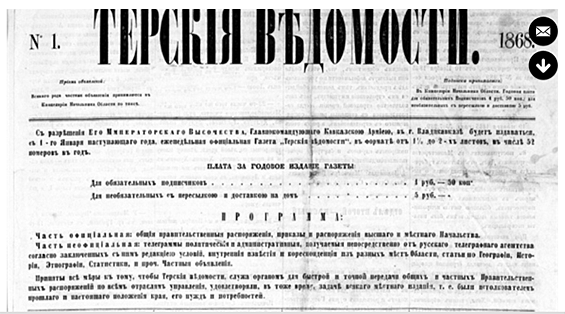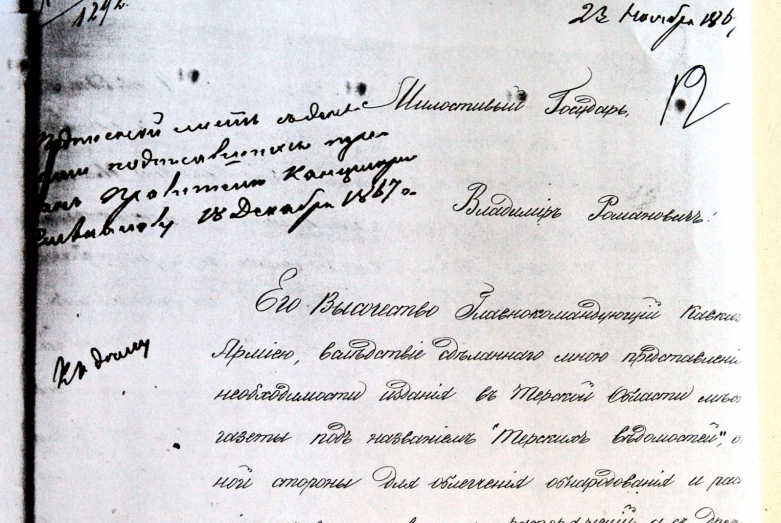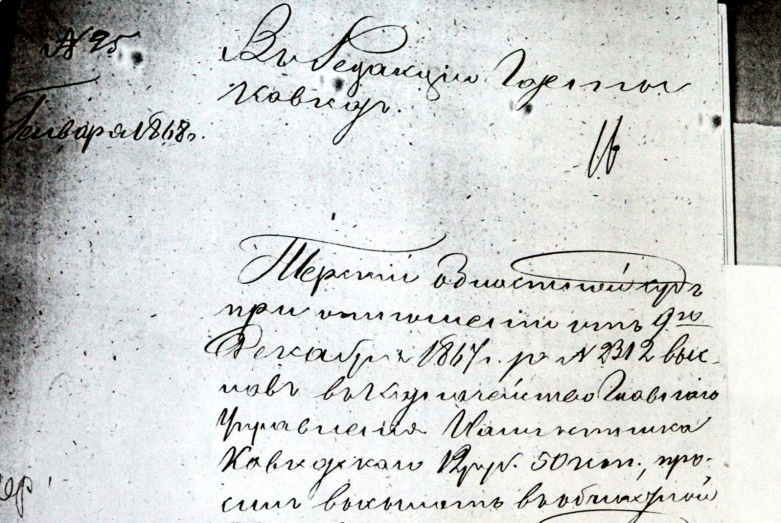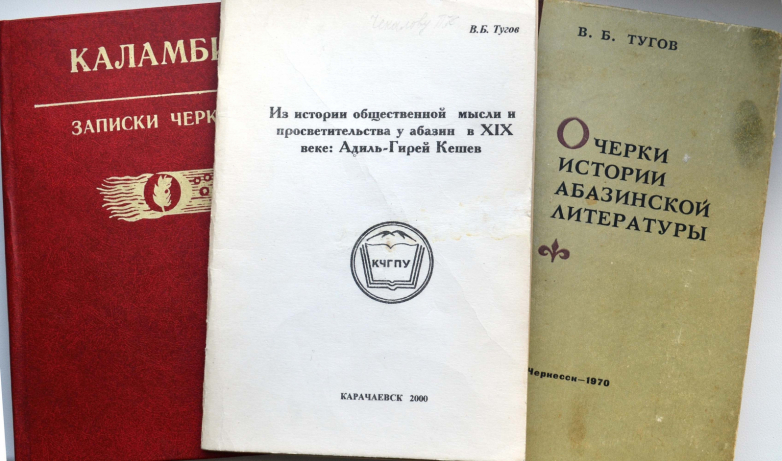Creative heritage of the writer and public figure Adil-Girey Keshev played a significant role in the spiritual life of the Abaza people, taking an honorable place at the top of the educational literature of the North Caucasus.
Bilal Hasarokov
Adil-Girey Keshev (1837–1872) - a talented writer, progressive public figure and educator of the 60-70-ies of the 19th century, whose work has great historical and cultural significance. His creative heritage has become an integral part of the spiritual life of the Abaza people.
Writer, teacher, editor
Adil-Girey was born in 1837 in the ancestral village of Kechev of the Kuban region of the Zelenchuksky district of Verkhne-Kubansk in the family of the Abaza prince Kuchuk Kechev.
In 1850, he was enrolled in the Stavropol gymnasium of young representatives of the mountain nobility, and in 1858, he graduated from it with a gold medal. Then he entered biennial courses to prepare for the university at the gymnasium.
On August 1, 1860, a young man was accepted without exams for the first year of the Oriental Faculty of the Imperial St. Petersburg University. There he had to learn Arabic, Persian, Turkish, Tatar. However, Keshev could not get a higher education. The fact is that the freedom-loving part of the students at that time in St. Petersburg took part in the strikes. After the suppression of student unrest, the university’s leadership began to introduce barrack orders, banning to hold meetings, imposing a paramilitary regime. Some students left the university in protest. Keshev was among them.
Upon returning to Stavropol, at the end of November 1861, Adil-Girey was enlisted in the Provincial Chancellery for the vacancy of an interpreter, where he worked until early 1863. From there he transferred to a gymnasium as a teacher. In November 1866, in connection with the transformation of the provincial gymnasium into a classical one, he entered the Stavropol Control Chamber as a secretary. Here, for seniority, Keshev was transferred to the collegiate secretaries with seniority.
The service in Stavropol continued until the summer of 1867, and in August, he moved to Vladikavkaz, the administrative center of the Terek region, and was appointed editor of the newspaper "Terskie Vedomosti", the first Russian newspaper in the North Caucasus.
Here Keshev lived and worked until the end of his life - short, but bright and fruitful. A talented writer and publicist Adil-Girey Kuchukovich Keshev died suddenly in 1872. He was buried in Vladikavkaz.
Bright student Keshev
The Stavropol gymnasium in the middle of the 19th century was the only secondary educational institution in the entire North Caucasus and played a large role in the education and upbringing of the highland children. Adil-Girey Keshev studied in the Stavropol gymnasium from 1850 to 1860, when it was headed by Yanuariy Neverov, an outstanding teacher, educator, and public figure who paid special attention to pupils from mountain peoples. At his request, the boarding teachers monitored all aspects of the mental and moral life of the mountaineers entrusted to their supervision, clarified their concepts and encouraged them to work, inspiring love for all that is good and beautiful.
Without belittling highland students at all, Neverov aroused and supported in them a sense of national identity and civic duty.
Adil-Girey Keshev was a successful and bright high school student. So, his work was recognized as one of the best at the annual essay competition on the national language and history in 1857. It was called "On the nature of the characters in contemporary Russian stories and novels." The following year, Keshev won first place. The award was due to the essay "On the satire during the time of Peter I, Catherine and in our time." The competition commission noted the autonomy of many conclusions, which were the result of a long study of the issue and the historical features of the era.
It was during the years of study in the gymnasium that the foundations of the democratic worldview of the young mountaineer, his social and political views and literary and artistic ideal were formed.
Literary arts
Already within the walls of the Stavropol Gymnasium, Adil-Girey began to be especially fascinated by literature and showed literary talent. This was a great merit of the teacher of Russian literature Fedor Yukhotnikov, who was an expert on Russian and world classics and aroused in students a deep interest in his subject, introducing them to the greatest literary works.
While still a high school student, Keshev began writing and publishing. In the fifth issue of the "Library for Reading" journal in 1860, under the general title "Notes of the Circassian", three of his stories were placed: "Two months in the village", "Gin's student" and "Scarecrow". When he became a university student, his story "Abreks" was published in the journal "Russky Vestnik" (No. 11, 1860), and later on the essay "On the Hill" (1861). Each of these works is part of the true history of the native people. In terms of depth of content, subtle psychological analysis of socio-economic processes and, finally, in their capacity, they were in no way inferior to the works of experienced writers.
"I tried in my notes, - writes Adil-Girey Kuchukovich to the publisher of the "Library for Reading" journal Druzhinin, - to avoid everything that comes out of the everyday life of Circassians, fearing accusations of intentional effect. I wanted to present the Circassians not on horseback and not in dramatic positions, as it was represented before, but at the home hearth, with all their human side"
(in the 19th century Russian artistic and historical literature the word "Circassian" meant the most diverse peoples of the North Caucasus, therefore, in this context the word "Circassian" is close in meaning to the word "mountaineer" - ed.).
Adil-Girey Keshev showed himself to be a more mature master of the artistic word than his predecessors and contemporaries from among the Caucasian mountaineers, who wrote in Russian. In his works, creative development of the principles of Russian realistic literature and more organic, skillful use of native folklore, skillful introduction to the fabric of the work of figurative sayings, proverbs and sayings of the native people are tangible. All this helped Keshev to convey the peculiarities of his characters' thinking, gave the style of the writer a peculiar highland flavor.
Editorial activities
So, in 1867, Keshev became the first editor of the newspaper "Terskie Vedomosti", which was based in Vladikavkaz.
Its first issue was released on January 1, 1868. The newspaper was printed weekly with a circulation of 400-500 copies and distributed in the Terek region.
"A few words about the significance of the publication of "Terskie Vedomosti" – this is the title of the leading article of the first issue. The article was just about what is a new newspaper, what are its topics. It said that the informal part of the newspaper would widely and comprehensively cover the life of the population of the North Caucasus, which represents "an amazing variety of tribes, each of which expresses some typical peculiarity both in terms of manners and customs, as well as social and domestic life, language, religious concepts."
The undoubted merit of Keshev is that he attracted the mountain intelligentsia to the participation in the newspaper, its best creative forces. Gradually, this group included the Ingushs Chakh Akhriev, Adil-Girey Dolgiev, Ossetians Mikhail Baev, Boris Gatiev, Inaluko Tkhostov, Gatsyr Shanaev, Kabardians Kazi Atazhukin, Dmitry Kodzokov and many other representatives of the Russian intellectuals.
The editors of "Terskie Vedomosti", headed by Keshev, looked at the education of the mountaineers as a factor that should lead the Caucasian peoples to the path of progress and culture.
Disputes about the origin of Keshev
The priority of disclosure in the early 60s of the twentieth century, of the pseudonym Adil-Girey Keshev, who signed his works by the name "Kalambiy" (translated from Arabic "wielding a skillful pen" - ed.), studying his biography, research of his literary, journalistic and the scientific heritage belongs to Lyudmila Georgievna Golubeva, who worked at that time in the Adygeya
Research Institute. Subsequently, many researchers in the field of philology, ethnography, and history turned to the life and work of the educator: Raisa Hashkhozheva, Tugan Kumykov, Mark Kosven, Nurya Tabulova, Henry Kusov, Victor Korzun, Elena Danilova and others.
However, almost all modern Adyg folklorists, literary critics, ethnographers, historians consider Keshev as a "natural Adyg", as an Adyg writer and public figure of the 19th century, his work is perceived as the pinnacle of Russian-language Adyg pre-revolutionary literature. In addition, this is despite the fact that the personality and biography of the educator and even his father, Kuchuk Kiachev, are known to specialists in detail, and most of the research materials have been introduced into scientific circulation. Moreover, in the Russian sources of the 19th century, speaking of the Abaza, princes Kiachevs (Kechevs, Keshevs) are invariably noted as rulers of one of the branches of the Abaza-Tapantes.
This question cannot be circumvented, therefore the well-known literary critic, Professor Vladimir Batahovich Tugov examined this problem in detail in his work "From the History of Social Thought and Education among the Abaza in the 19th Century: Adil-Girey Keshev" and convincingly proved that Adil-Girey Kuchukovich Keshev was Abaza by birth, by education, by language and by national identity.
Keshev and the present
The activities of Adil-Girey Kuchukovich are of great importance for all the peoples of the North Caucasus. His life and work are studied in the framework of school and university educational programs.
His deep knowledge of history, ethnography and folklore is evidenced by the fact that he introduces in his works authentic historical facts, works of oral folk art, toponymic realities, makes extensive use of common Caucasian, Turk and Adyg-Abaza terms, national-specific expressions and word turns.
Keshev - the first representative of the Abaza people, who managed to become a famous public figure, fiction writer, publicist, whose work was one of the peaks of the North Caucasian enlightenment of the nineteenth century. In those historical conditions, his activity could not lead to the spread of writing among his fellow tribesmen, the birth of literature, but he and his associates paved the way for the next generation of educators who in the twentieth century were able to carry out this historic mission.
The creative legacy of Adil-Girey Kuchukovich Keshev has a lasting cognitive, historical and cultural significance. It has become an integral part of the national culture and the spiritual life of the people in our time and is the pride of the Abaza, as well as of all the peoples of the North Caucasus.





to login or register.